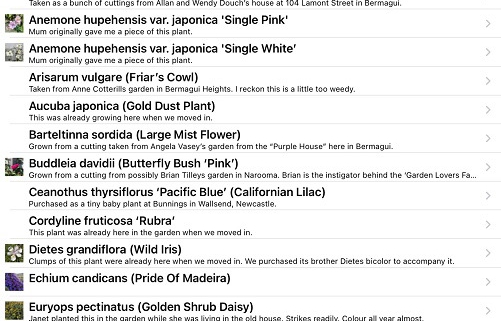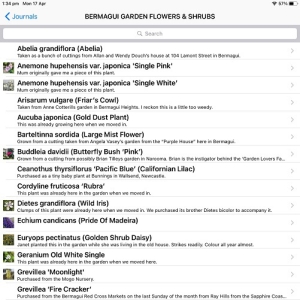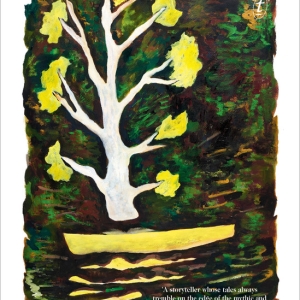Digital Gardening
Like most gardeners, I have a big pile of plant labels that I have collected over the years. I hang onto them because the labels contain handy growing information (not to mention their names). Recently, however, I developed a dilemma. I went on a bit of a cutting spree in a couple of gardens and the problem arose as to how to keep track of the needs and names of all these plants?
I figured that a digital solution might exist and subsequently discovered that the world of gardening apps is enormous and varied. Some apps allow you to draw detailed landscape designs and shuffle plants around. Some allow you to track your vegetable garden planting. Some are designed for indoor plants and can send you a reminder of when to water or fertilise. Many featured built in plant identifiers, allowing you to take a photo and find out the name of the plant (always double check and cross reference the results as I have found they can be hit and miss – especially for less common plants!).
What I was seeking was a simple, straightforward way to create an inventory for my garden; a bit like sticking that pile of plant labels into an exercise book and adding to the book as the garden grows. Eventually, I settled on a free app called Garden Journal. This allows me to create different ‘journals’ (think exercise books) that I have individually named – such as Indoor, Succulents, Edibles and Ornamental.
Inside each journal I can take a photo of a plant, add its name and add notes about its needs or who/where it came from. Each entry within the journal becomes a bit like a traditional plant label and, within each journal, the plants are automatically arranged alphabetically. I even created a Wish List journal for plants that I hope to procure. It’s digital gardening without getting my digits dirty. Give it a go, there might be an app for you.
Meanwhile, around the town gardens the tibouchinas are really the stars of the show at this time of the year. Once known as lassiandras, every garden should have one as there is a size to suit any situation. For those with a bit more space, aim for a small-tree species like Tibouchina granulosa or else the cultivar Tibouchina lepidota ‘Alstonville’. If you can, try to couple one with the pink-flowered form of Tibouchina granulosa ‘Kathleen’ for maximum purple and pink impact. For smaller spaces, seek out the cultivars ‘Jules’ or ‘Jazzie’, that both grow to around a metre tall. Finally, if you are looking to brighten the place up for winter with a splash of colour, consider planting out a few punnets of the cooler-weather-loving annuals such pansies, violas, primula or polyanthus.
In the wild places, on the sides of the road around the Triangle, not a lot is currently standing out but there are some scattered creamy white splashes appearing in the forest canopy as the Corymbia gummifera (red bloodwood) trees begin to flower.
This month in the vegie garden the first peas and snow peas should be coming on and to keep the crop producing we will do another follow-up planting. If you love, or want to try, broad beans then it’s the perfect time to pop in some seeds. You can sow some more lettuce (if the seeds from the last crop aren’t already popping up!) and alliums such as onions, garlic, leeks and eschalot bulbs will also do well if planted this month.
Finally, if you have any comments, gardening questions or plant or pest identification problems, please send them through to gardening@thetriangle. org.au and we will endeavour to help.
Happy Growing!



